DwaBaseMaterial
Overview
The DwaBaseMaterial is an “uber shader” that is most useful for roughly transferring values from a third party uber shader or connecting maps from a content creation tool that uses the uber shader model. In other words, if you’re making use of metallic maps this is the material to use. The DwaSolidDielectricMaterial is still the general purpose material intended for most materials such as wood, paint, plastic, stone, clay, etc.
Attribute Reference
Advanced attributes
specular
Float bindable
default: 1.0
enables/disables specular reflections (binary 0|1 for plausibility)
sss_trace_set
TraceSet
default: None
Set of geometries that contribute neighboring subsurface points. By default, only the geometry associated with this material contributes to subsurface. If you want adjacent geometry with different material to contribute as well, specify all those parts here.
Clearcoat attributes
clearcoat
Float bindable
default: 1.0
enables/disables clearcoat (binary 0|1 for plausibility)
clearcoat_attenuation_color
Rgb bindable
default: [ 0.5, 0.5, 0.5 ]
the attenuation color of the clearcoat when 'cleacoat thickness' > 0
clearcoat_bending
Bool
default: True
(advanced, recommended ON) bends rays based on the clearcoat-refractive-index before evaluating the lobes under clearcoat
clearcoat_model
Int enum
0 = “Beckmann”
1 = “GGX” (default)
sets the normal distribution function for clearcoat. GGX is currently isotropic only
clearcoat_normal_dial
Float bindable
default: 1.0
controls the amount of infuence of the alternate clearcoat normal
clearcoat_refractive_index
Float
default: 1.5
defines the Fresnel behavior
clearcoat_roughness
Float bindable
default: 0.1
the roughness of the clearcoat lobe
clearcoat_thickness
Float bindable
default: 0.0
the thickness of the virtual clearcoat layer. Values > 0 enable absorption
independent_clearcoat_normal
NormalMap
default: None
specifies an independent shading normal (normal map) for the clearcoat lobe
show_clearcoat
Bool
default: False
enables/disables clearcoat
use_independent_clearcoat_normal
Bool
default: False
specifies whether the clearcoat lobe should use an independent normal
Common attributes
casts_caustics
Bool
default: False
allows continuation of caustic light paths.
presence
Float bindable
default: 1.0
controls the visibility of this object. Useful for fading an object in/out, or to specify a cut-out mask on thin single-sided geometry (eg. a complex leaf texture on a simple card).
thin_geometry
Bool
default: False
enables proper shading of infinitely thin geometry such as paper or leaves.
Diffuse attributes
albedo
Rgb bindable
default: [ 1, 1, 1 ]
the overall surface color as seen from a distance (ie. diffuse color)
bssrdf
Int enum
0 = “normalized diffusion” (default)
1 = “dipole”
2 = “random walk”
0 for NormalizedDiffuse, 1 for Dipole, 2 for random walk
crease_attenuation
Float bindable
default: 0.0
This mitigates the over-brightening around creases which random walk SSS can cause.
diffuse_lightset
LightSet
default: None
lightset to use for diffuse lobes
diffuse_roughness
Float bindable
default: 0.0
Roughness of the diffuse shading. If the value is zero a Lambertian model is used. If it's above zero the Oren Nayar model is used. Not compatible with subsurface scattering.
diffuse_transmission
Float bindable
default: 1.0
multiplier on the amount of light that is transmitted through the surface.
diffuse_transmission_blending_behavior
Int enum
0 = “RGB”
1 = “Monochromatic” (default)
Controls how diffuse transmission color attenuates diffuse reflection
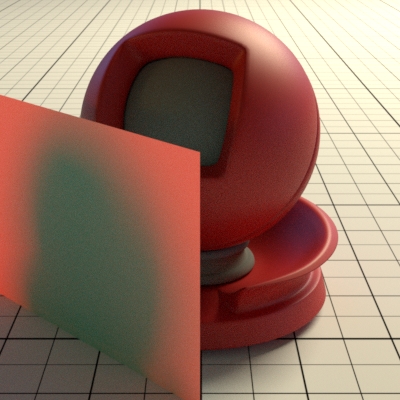
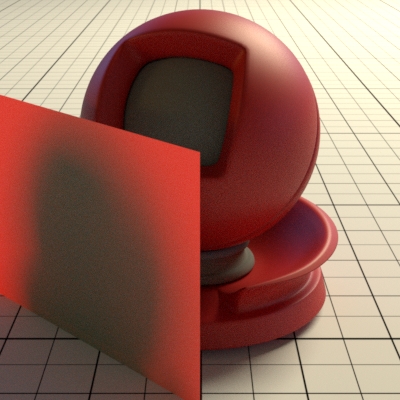
diffuse_transmission_color
Rgb bindable
default: [ 0, 0, 0 ]
the color/amount of light that is transmitted through the surface.
enable_sss_input_normal
Bool
default: False
enables sampling the normal map for sss samples. More accurate but potentially expensive
resolve_self_intersections
Bool
default: True
tries to resolve self-intersecting geometry automatically by only evaluating 'exiting' intersections for subsurface evaluations
scattering_color
Rgb bindable
default: [ 1, 1, 1 ]
the subsurface scattering 'falloff' color
scattering_radius
Float bindable
default: 0.0
the distance the light scatters beneath the surface. When 0 surface diffuse (lambertian or toon) is used
show_diffuse
Bool
default: True
enables/disables diffuse reflectance
Emission attributes
emission
Rgb bindable
default: [ 1, 1, 1 ]
the energy emitted from this material
show_emission
Bool
default: False
enables/disable emission
Fuzz attributes
fuzz
Float bindable
default: 1.0
fuzz mask
fuzz_albedo
Rgb bindable
default: [ 1, 1, 1 ]
Color of the fuzz highlights.
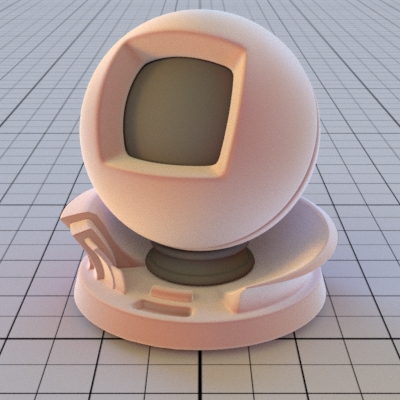
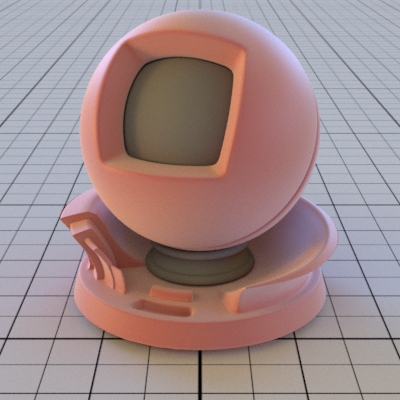
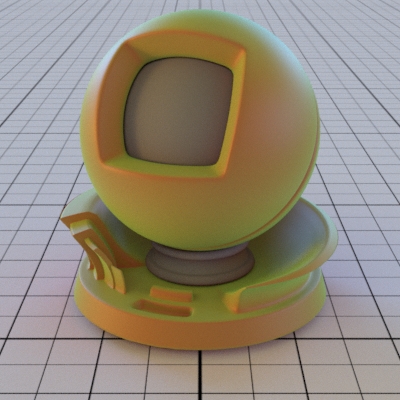
fuzz_normal
NormalMap
default: None
specifies an independent shading normal (normal map) for the fuzz lobe

fuzz_normal_dial
Float bindable
default: 1.0
controls the amount of infuence of the alternate fuzz normal
fuzz_roughness
Float bindable
default: 0.25
Lower values result in glancing angle highlights while higher values result in a broad, uniform coverage
show_fuzz
Bool
default: False
Enables/disables fuzz lobe
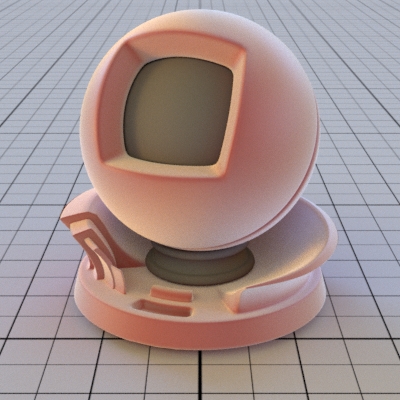
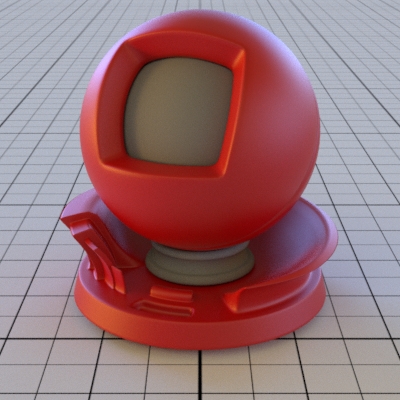
use_absorbing_fuzz_fibers
Bool
default: False
Specify whether dark fuzz fibers absorb energy or transmit it to the layers below.
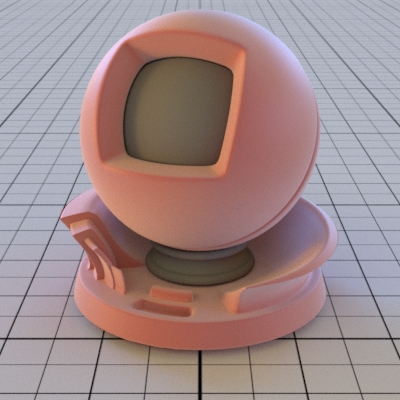
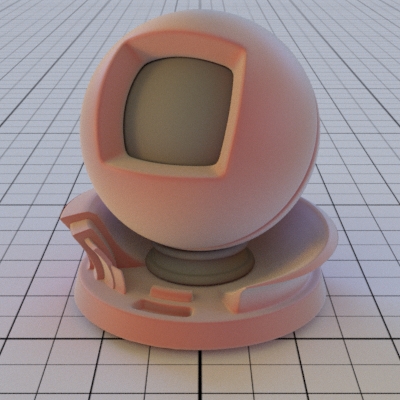
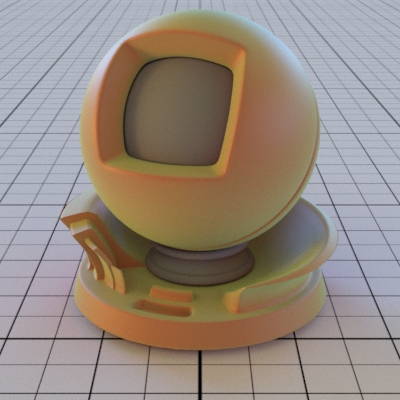
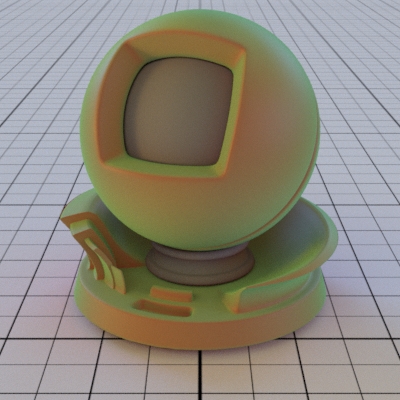
Glitter attributes
glitter
Float bindable
default: 1.0
enables/disables glitter model (binary 0|1 for plausibility)
glitter_LOD_quality
Float
default: 0.5
controls quality of glitter at distances where individual flakes cannot be perceived; at lower values, approximation kicks in earlier
glitter_approximate_for_secondary_rays
Bool
default: True
use an approximation to shade glitter for non-mirror secondary rays
glitter_color_A
Rgb bindable
default: [ 1, 1, 1 ]
base flake color (use physical metallic color values)
glitter_color_B
Rgb bindable
default: [ 1, 1, 1 ]
base flake color (use physical metallic color values)
glitter_color_hue_variation
Float bindable
default: 0.0
introduce hue variation in flake color centered at the base flake color's hue on the hue wheel
glitter_color_saturation_variation
Float bindable
default: 0.0
introduce saturation variation in flake color centered at the base flake color's saturation
glitter_color_value_variation
Float bindable
default: 0.0
introduce value variation in flake color centered at the base flake color's value
glitter_compensate_reference_space_deformation
Bool
default: True
(In ReferenceSpace) Compensates for stretch/compression/shear in glitter shapes resulting from animation etc
glitter_debug_mode
Int enum
0 = “off” (default)
1 = “blend”
2 = “color”
3 = “averageColor”
4 = “footprintArea”
5 = “radius”
developer debug visualization modes
glitter_density
Float bindable
default: 1.0
controls the number of flakes per unit length; larger density packs more flakes into same space
glitter_jitter
Float bindable
default: 1.0
Controls how much the flakes are randomly offset from a regular grid
glitter_layering_mode
Int enum
0 = “physical” (default)
1 = “additive”
layering mode for glitter on top of the under material. physical: conserves energy and glitter attenuates under material, additive: breaks energy conservation but glitter is never darker than the under material (eg. use case: snow)
glitter_randomness
Float
default: 0.5
randomness of flake orientation
glitter_roughness_A
Float
default: 0.14
specular roughness of individual flakes (0 makes flakes mirror-like)
glitter_roughness_B
Float
default: 0.14
specular roughness of individual flakes (0 makes flakes mirror-like)
glitter_seed
Int
default: 0
The seed for the glitter random number generator
glitter_size_A
Float bindable
default: 1.0
size of the flakes. Apparent flake size may vary based on how much the flake spheres intersect the surface
glitter_size_B
Float bindable
default: 1.0
size of the flakes. Apparent flake size may vary based on how much the flake spheres intersect the surface
glitter_space
Int enum
4 = “object”
5 = “reference” (default)
The space to calculate the worley noise in, defaults to reference space
glitter_style_A_frequency
Float bindable
default: 1.0
0 implies none of this style, 1 implies all the flakes will get this style
glitter_style_B_frequency
Float bindable
default: 0.0
0 implies none of this style, 1 implies all the flakes will get this style
glitter_texture_A
String filename
default:
filename that points to a texture .exr or .tx file (must be mip-mapped and tiled with maketx).
glitter_texture_B
String filename
default:
filename that points to a texture .exr or .tx file (must be mip-mapped and tiled with maketx).
glitter_texture_orientation_randomness
Float
default: 0.15
randomly orient each texture
show_glitter
Bool
default: False
Enables/disables glitter lobes
Iridescence attributes
iridescence
Float bindable
default: 0.0
controls the strength of the iridescence effect
iridescence_apply_to
Int enum
0 = “primary specular” (default)
1 = “clearcoat/moisture specular”
Apply iridescence to primary specular lobe or clearcoat/moisture lobe
iridescence_at_0_incidence
Float bindable
default: 1.0
Iridescence effect at 0 degree viewing angle
iridescence_at_90_incidence
Float bindable
default: 1.0
Iridescence effect at 90 degree viewing angle
iridescence_color_control
Int enum
0 = “use hue interpolation” (default)
1 = “use ramp”
use hue interpolation: automatically cycles through hue wheel, use ramp: user specified color ramp
iridescence_colors
RgbVector
default: [[ 1, 0, 0 ], [ 1, 1, 0 ], [ 0, 1, 0 ], [ 0, 1, 1 ], [ 0, 0, 1 ], [ 1, 0, 1 ], [ 1, 0, 0 ]]
List of colors on the ramp
iridescence_exponent
Float bindable
default: 1.0
Tightens or broadens the distribution of colors
iridescence_flip_hue_direction
Bool
default: False
flip interpolation around the hue wheel to counter-clockwise direction
iridescence_interpolations
IntVector
default: {}
None: 0 | Linear: 1 | Exponential Up: 2 | Exponential Down: 3 |
Smooth: 4 | Catmull Rom: 5 | Monotone Cubic: 6
iridescence_positions
FloatVector
default: {}
ramp positions
iridescence_primary_color
Rgb bindable
default: [ 1, 0, 0 ]
First color to interpolate from around the hue wheel
iridescence_ramp_interpolation_mode
Int enum
0 = “RGB” (default)
1 = “HSV”
RGB: lerp in RGB space which matches UI preview but can lose saturation, HSV: lerp in HSV space which preserves saturation
iridescence_secondary_color
Rgb bindable
default: [ 1, 0, 0 ]
Second color to interpolate to around the hue wheel
iridescence_thickness
Float bindable
default: 1.0
Controls how much the color spectrum is repeated
Normal attributes
input_normal
NormalMap
default: None
specifies an alternate shading normal in the tangent frame (normal map)

input_normal_dial
Float bindable
default: 1.0
controls the amount of influence of the alternate normal
Normal Anti-aliasing attributes
normal_AA_dial
Float
default: 1.0
Controls the amount roughness compensation from the normal map AA strategy.
normal_AA_strategy
Int enum
0 = “none” (default)
1 = “toksvig”
Normal map anti-aliasing strategy to use - 'none' uses regular mip-mapping, 'toksvig' increases specular roughness corresponding to the geometric details filtered out because of mip-mapping.
Specular attributes
anisotropy
Float bindable
default: 0.0
controls the shape of the primary reflection
metallic
Float bindable
default: 0.0
enables/disables metallic model (binary 0|1 for plausibility)
metallic_color
Rgb bindable
default: [ 1, 1, 1 ]
the overall reflection color, defines Fresnel behavior
metallic_edge_color
Rgb bindable
default: [ 1, 1, 1 ]
the reflection color at grazing angles, defines Fresnel behavior
refractive_index
Float
default: 1.5
defines the Fresnel behavior, (affects reflection and refraction)
roughness
Float bindable
default: 0.5
the roughness of the surface (currently only affects reflection)
shading_tangent
Vec2f bindable
default: [ 1, 0 ]
controls the orientation of anistropy
show_specular
Bool
default: True
enables/disables specular reflections
specular_lightset
LightSet
default: None
lightset to use for specular lobes
specular_model
Int enum
0 = “Beckmann”
1 = “GGX” (default)
sets the normal distribution function for specular. GGX is currently isotropic only
Transmission attributes
dispersion_abbe_number
Float
default: 34.0
The amount of dispersion/chromatic-aberration via refractions. Lower this number to increase the effect. A value of 0 turns off dispersion. Around [25-80] makes sense for realistic glass. Lower values may look better on gemstones.
independent_transmission_refractive_index
Float
default: 1.5
defines a separate IOR for the bending of light with transmission
independent_transmission_roughness
Float bindable
default: 0.5
separate roughness for transmission
show_transmission
Bool
default: True
enables/disables refractive solid model
transmission
Float bindable
default: 0.0
enables/disables refractive solid model (binary 0|1 for plausibility)
transmission_color
Rgb bindable
default: [ 1, 1, 1 ]
the desired color of transmitted light
use_dispersion
Bool
default: False
use dispersion effects in transmission
use_independent_transmission_refractive_index
Bool
default: False
use a separate IOR for transmission
use_independent_transmission_roughness
Bool
default: False
use a separate roughness for transmission
General attributes
extra_aovs
Map
default: None
Bind this attribute to a 'ListMap' that contains references to ExtraAovMaps that specify additional outputs that can be assigned to a RenderOutput "light aov" result
label
String
default:
label used in material and light aovs
priority
Int
default: 0
The material's place in an order of precedence for overlapping dielectrics. A value of 0 means the priority should be ignored. Materials with lower numbers (higher priority) "override" materials with higher numbers (lower priority). To enable automatic removal of self-overlapping geometry, a non-zero priority must be set on the geometry's material.
record_reflected_cryptomatte
Bool
default: False
Indicates whether the next reflected surface should appear in the reflected cryptomatte layers
record_refracted_cryptomatte
Bool
default: False
Indicates whether the next refracted surface should appear in the refracted cryptomatte layers